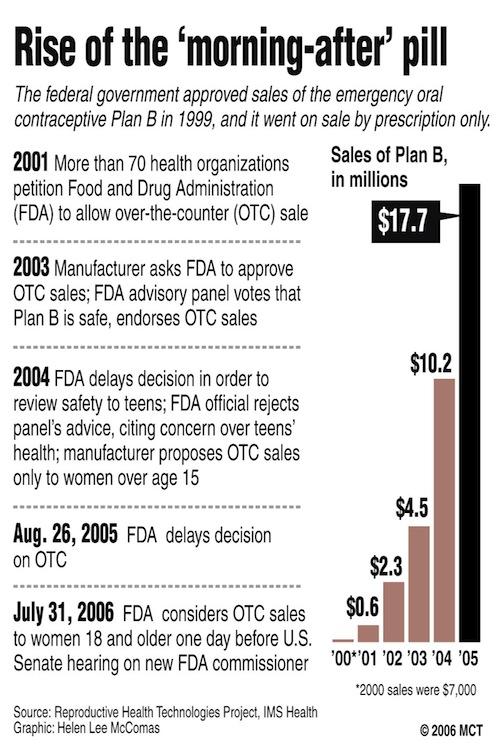As a teenager, I firmly believe that the emergency contraception “Plan B” pill should remain available to girls age 15 and over.
Currently, the pill is sold without a prescription to women and girls ages 15 and older. Last Monday, a federal appeals court temporarily granted the Obama Administration’s request for a stay of an order by Judge Edward R. Korman of Federal District Court that the pill be available to women of all ages, over the counter. The Justice Department appealed that order and the appeals court is waiting to hear both sides of the argument before implementing anything.
The idea that “Plan B” could be available to girls of all ages has caused an endless debate. Some feel that making the pill more available encourages teens to engage in sexual activity, and that the minimum age should be raised. Other groups, including some that believe that the government shouldn’t restrict women’s ability to terminate a pregnancy at all, think that the pill should be available for all ages. The debate is contentious.
I feel that the pill should remain available over the counter to girls 15 and over. Although we don’t want to encourage teens to have sex, the reality is that many already are. A study done by CNN shows that over 42% of teenage girls age 15-19 have had sex or are currently sexually active. In addition, teen birth rates have decreased almost 50% since 1991 as contraceptives have become more available and the percentage of teens having sex has stayed steady. In other words, the increased availability of contraceptives throughout the United States has not caused a noticeable increase in the number of teens engaging in sexually activity.
This drug is meant as a back-up emergency method if birth control or a condom fails. It is not to be used as a regular contraceptive. Teens that stayed away from sexual activity in the past due to lack of an access to birth control or contraceptives will most likely not suddenly become sexually active based on Plan B’s availability because the drug cannot be used regularly. Using it more than twice a month can be harmful to a girl’s health. In addition, some risks come with taking it. Plan B is almost 40 times the dosage of Levonorgestrel, the drug in most forms of birth control. The side effects that come with Plan B are very similar to the side effects of starting birth control except they are slightly exacerbated. These include, nausea, vomiting, dizziness and fatigue. Plan B is also not fully guaranteed to prevent pregnancy.
The bottom line is that almost 50% of teen girls ages 15-19 are having sex. In the past, just those 18 and over were able to access Plan B. Making contraceptives such as Plan B less available will not cause teens to refrain from engaging in sexual activity. Reducing pregnancies among younger teens, who are even less prepared than 18 year olds to face motherhood, give up a child for adoption or choose abortion, is vital. The government cannot stop what is already happening. It can only do everything in its power to make sure these decisions made at a young age do not have detrimental effects on a girl’s future.















































